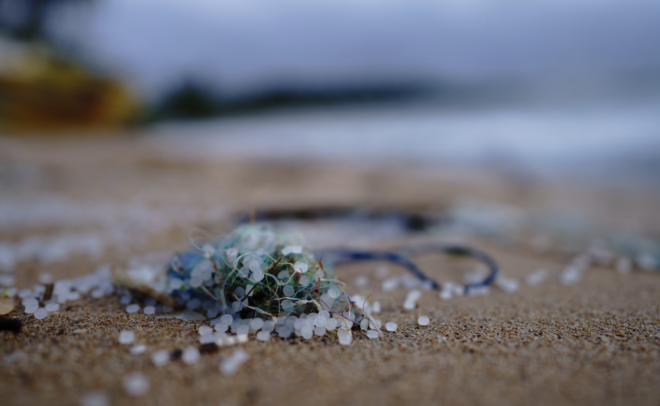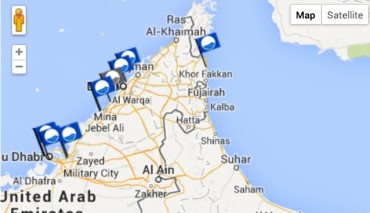Microplastics are tiny bits of plastics less than 5mm in size and they are everywhere. More than 10 years ago we championed reporting on the issue, covering the growing plastic gyres the size of countries in the Pacific Ocean – remember when we interviewed David de Rothschild about it? Microplastics are choking the seas, they are rolling around deserts where we breath them in, and recently are being found in the stool (poop) of newborns.
More worrying is that microplastics themselves are not inert, and they have the ability to pull along other environmental toxins with them, amplifying the toxicity effect, finds a new research study.
“Microplastics are a kind of magnet for environmental pollutants, ferrying them through our digestive tract, and releasing them in a concentrated form in certain areas – thus causing increased toxicity,” report researchers in the journal Chemosphere.
The researchers in the study from Tel Aviv University found that microplastics absorb and concentrate toxic organic substances at sea and increase this toxicity by a factor of 10, which may lead to a severe impact on human health. The study was led by Ines Zucker together with Ph.D. student Andrey Eitan Rubin.
What exactly are microplastics again?
Microplastics are a general name for plastic materials that appear in a configuration of particles and microscopic fibers the size of tens of microns and up to a few millimeters.
Microplastics are found almost everywhere: in water wells, in soil, airborne in deserts, in food products, in water bottles, and even in glaciers at the North Pole. The researchers explain that since plastic is not a natural material, it decomposes very slowly in nature, over thousands of years. Throughout the process, the microplastic particles encounter environmental pollutants that attach to plastic surfaces, and as a pair, they may pose a threat to the health of the environment and to humans.
Heading towards the Great Pacific Garbage Patch
Zucker explains: “In this study we showed that even very low concentrations of environmental pollutants, which are non-toxic to humans, [stick] to the microplastic result in significant increase in toxicity.
Andrey Eitan Rubin adds: “The amount of waste dumped into the ocean every year is enormous – the best known example is the plastic island in the Pacific Ocean, which has an area 80 times larger than the State of Israel. But this is not just a remote problem – from our preliminary monitoring data show that Israel’s shores are among the most polluted with microplastic waste.”
Each of the microplastic particles secreted in these areas has tremendous potential for harm as they serve as an effective and stable platform for any pollutant that they may encounter on their way to the human body, the researchers point out.
How to avoid microplastics?

Plastic Soup draws an atlas of plastics and where they are accumulating around the world.
The solution?
Zero Waste Shops
Stop buying plastic in all sorts of ways. In Canada and Europe zero-waste stores encourage the refilling of your own brought-from-home bags, jars and containers. In Israel my friend Alison has started a company called WeFill where you subscribe to a service that delivers dry goods and cleaning products in reusable sacks and containers that you send back with your new order every week. That’s a great way to start.
Google “refilling station for household and personal care products” and you will find a location that may do the same near you.
Water
Use tap water and purify it with a filter and refill stainless steel or glass bottles for everyday use.
Toys and Household
Avoid buying Dollar Store items (which emit other kinds of toxins) and purchase things you’d be happy to pass down. Toys made from wood and bamboo are a good start.
Fashion
Avoid synthetic clothing – which is hard to do. According to Plastic Soup: As consumers, we often feel hopeless when we hear about problems on such a global scale. Replacing your plastic bottle with a reusable one will not be enough this time. Make sure you ventilate and vacuum your home frequently to ensure that the plastic fibers are being collected.
When purchasing clothing or textiles for your home, choose sustainably sourced natural materials as much as possible. Try to stay away from fast fashion, as this model only encourages overconsumption of clothes, especially synthetic ones like polyester.
Or ask your favorite fashion brand to take responsibility for the clothes they put on the market. They must guarantee that their products do not put our environment, ourselves, and, most importantly, the next generations at risk.




